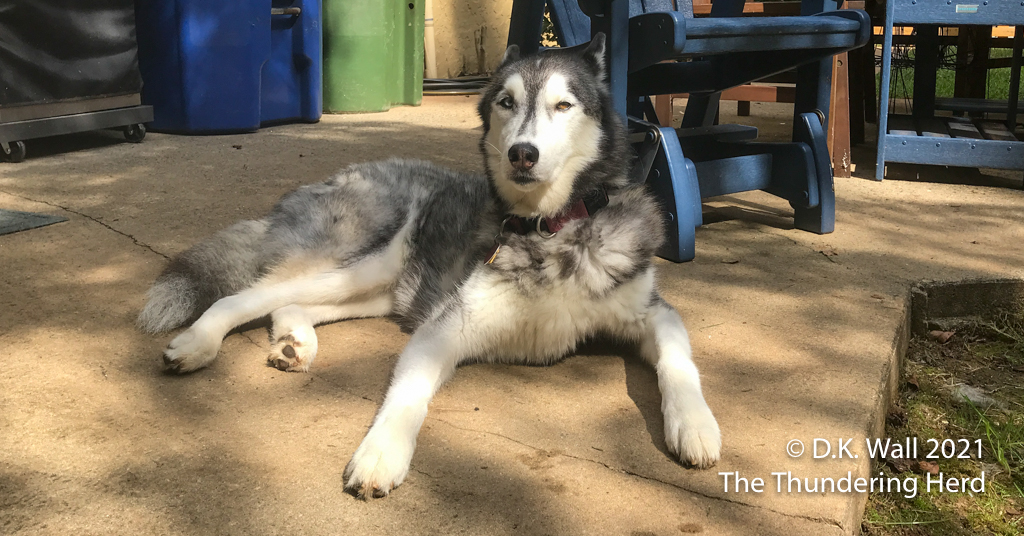Share This Musing
In a bizarre moment I had long forgotten, I once hired a private investigator to sweep an office for bugs. Hidden microphones, not insects.
Why I remembered
I use Feedly to keep track of new postings on my favorite websites, many dedicated to the business of writing. Last week, Writers in the Storm shared the post Writing Spies: How To Bug A Room.
Before we continue, please pause and think of the weird things a writer needs to know to make stories believable. We’ve long joked as a profession that if our Google search histories became public knowledge, society would disown us.
To get the best results, we interview experts which creates its own challenges. Imagine calling your local police department and asking for creative ways to get away with a crime. That might create more of a reaction than we want.
Fortunately, the internet saves us some of the trouble. One of my favorite Facebook groups contains only authors and those in law enforcement. We writers ask all sorts of police procedural, criminal activity, or various other macabre questions and receive straight answers from the people who deal with the darkest of humanity. Fascinating doesn’t come close to describing the daily posts.
We also benefit from other authors who share their expertise. The article I mentioned is a great example. It also triggered a long-buried memory.
Set Up Circa 1990
We were a mid-sized company in a highly competitive industry. My official title was Corporate Controller—basically in charge of all accounting operations—but my role had expanded to managing virtually all administrative functions. Basically, if it wasn’t manufacturing or sales, it was my responsibility. Based on the knock on my door, that included preventing corporate espionage.
The number 2 executive in our company wanted to have a quick word, so I pointed to my office chairs as an invitation to sit. He shook his head, motioned for me to follow him, and then started an inane conversation about what he had eaten for lunch. When I opened my mouth to ask what was going on, he put a finger across his lips and shushed me. Stunned and puzzled, I followed him. We exited the office and crossed the parking lot until we were well away from the building.
Earlier in the day, he and our president were having a conversation on the phone and heard a clicking sound. They became convinced our office had been bugged.
My marching orders were clear. I was to hire someone—a private investigator—to sweep for bugs. No one in the company was to know what I was doing except for the four executives that ran the company. I was to report back to them once the job was complete.
Seriously. Play the Mission Impossible music.
The order might have been clear, but my next steps weren’t. Without a clue what to do since I didn’t know any private investigators, I decided to network with friends in similar positions in other companies.
Finding a Private Investigator
Networking back then was different. Few people had voicemail. Fewer had email. No one had cell phones. To connect with someone, I needed to call their office, leave a message with a receptionist, and wait on a return call. But I couldn’t discuss what I needed from the office because, of course, we thought the office might be bugged, so I had to schedule a time to call the person back without telling them what I wanted to discuss. If they agreed, I left the office, found a payphone, and called them back.
For the most part, my connections were as clueless as I. One, however, had a friend of a friend who had hired a private investigator. He called the friend who called their friend who called me back. Of course, I had to leave the office and find a phone. Finally, though, I had a name and number.
The call
When the private investigator came onto the phone, his sentences were clipped. After confirming our business was legal (yes, of course) and we weren’t a target of a law enforcement investigation (egads!), he assured me of his expertise in corporate security. He routinely scanned offices for listening devices (really?) and had found many over the years (holy cow!). Then he discussed his hourly fee (the least shocking part of the conversation, though it was healthy).
Since he couldn’t waltz into the office during the business day without creating tons of questions, we arranged to meet one evening after everyone had gone home. He described the van he drove. Told me where he would park. Described himself. Had me describe what I looked like.
I felt ridiculous. Since we were meeting after hours in an office parking lot, wouldn’t it be obvious who a private investigator was? The only person I didn’t know sitting in the only vehicle I didn’t recognize? And wouldn’t he know me because I was the one who knew what he was there for.
I needed to take this seriously, he cautioned me. What if someone impersonated him? Or impersonated me?
I bit my tongue to keep from suggesting I would blink the office lights three times when the coast was clear and he could reply with blinks from his headlights. I couldn’t, however, shake the feeling of insanity about the whole situation.
The Meet
The evening arrived. I chased everyone out. Once the office was dark and empty, I looked out into the nearly empty parking lot. My own car sat near the door. Far in the lot, an old panel van was backed into a space. Don’t think Scooby Doo, I cautioned myself, as I went outside.
He insisted on showing me his private investigator identification, flipping it out like an FBI agent. He demanded my identification to prove I was me. Once satisfied, he drove across the lot and parked near the entrance. He exited the vehicle, scanned the parking lot, and then—apparently satisfied we weren’t being followed—opened the sliding door of his vehicle and retrieved a large, black case.
Anyone watching, I realized, would think we were up to something nefarious. I ushered him inside. I opened my mouth to ask him a question, but he shushed me. No talking in case they were listening, of course, though I wasn’t sure what would happen if “they” knew “we” were there.
He opened the case and extracted a handheld black box adorned with a giant dial, a backlit meter, and a pair of lights, one red and one green. He plugged two items into the jacks on the box: a pair of headphones and a large cone attached to a plastic grip.
Seeing his gadgetry, I no longer thought of Scooby Doo. Ghostbusters came to mind. I decided not to share that observation. Someone might be listening.
The Sweep
He began. Not sure what to do, I followed him around the office.
He pointed the cone at various spots, studied the meter, and adjusted the dial. Periodically, one of the lights would flash. A green light elicited a grunt and a nod. A red light brought on a different grunt and a shake of the head. Once alerted, he would pause and study the area in detail.
When he completed the first round through the office, he returned to his case and pulled out a tool belt. With a screwdriver, he removed electrical outlet covers and peered into the walls with a penlight. At each workstation, he opened telephones and peered under chairs and desks. With a stepladder, he peeled back the plastic cover over fluorescent lights.
He scoured file cabinets and desks. He extracted toner cartridges and paper supplies from copiers and fax machines. On his last circle, he crawled on the floor peeling back the baseboards.
With a final grunt, his primary communication method, he packed away his gear. He looked me in the eyes and motioned for me to follow. Once we are back at his van, he spoke in a voice barely louder than a whisper. “It’s clean.”
As he drove away, I wondered why he waited to utter his conclusion until we were well outside. After all, hadn’t he just declared the office free of bugs?
The Report
A few days later, I received a thick envelope. The return address didn’t contain a company name. Inside, was a written report filled with technical jargon. On the top sat a substantial invoice.
I shared the analysis with the four executives. They scoured the document and asked questions, but ultimately seemed satisfied with the results. I never told anyone in the office about that weird evening.
A few weeks later, an acquaintance came up to me at a professional association. Someone had suggested he talk to me. Did I know of someone who could assist him with a corporate security issue?
Yes, I said, I knew a guy.
Books Read
Selena’s suspicions of her husband’s affair with their sons’ nanny have been confirmed. She isn’t shocked. He’s done this before, but for the sake of her boys, she’s begrudgingly accepted his promises to be better.
Distraught and unsure how to handle the situation, she gets onto the late train home and strikes up a conversation with a stranger in the seat next to her. Martha confesses she is having an affair with her boss and doesn’t know what to do. Shocked, Selena shares her own private woes.
Maybe, the stranger suggests, the nanny will just disappear and Selena can pretend nothing happened.
And then the nanny disappears.
The police, alerted by the nanny’s sister that she is missing, ask questions. Selena doesn’t know what happened, but nor does she know where her husband was after she had kicked him out of the house. Surely he couldn’t have done anything. He’s not a violent man. To protect her sons’ father, she doesn’t tell police about the affair.
Nor does she tell them the stranger on the train keeps texting her.
Lies and deceit have a way of unraveling in unexpected ways.
Interesting Link
A pet peeve of mine are “facts” shared that aren’t well referenced. If a news report states “A study says…,” I want to read the original study. If a social media post cites a fact, I want to see the source. This allows me to evaluate how reliable the statement is. Unfortunately, just getting to a source isn’t always enough. Sometimes you need the source of the source. As this entertaining video demonstrates, that’s often much harder than it sounds. Yes, this is long (twenty minutes), but it’s a great example.
Gratuitous Dog Picture

His Highness Little Prince Typhoon Phooey looks particularly unimpressed with my need to capture a photograph for today’s musing. I asked for a smile for the camera. This is the best Typhoon could do. Happy Monday. Harrumph.
Background title image is courtesy George Prentzas
3 Comments
Leave a Comment
Subscribe to the Random Musings
Want to be sure never to miss a Musing? Subscribers will be notified when I post a random observations on life or a short story. The email is absolutely FREE and you my unsubscribe at any time.
Current Reader Survey Question
Enjoyed the Story? Try a Short Story
Secrets, passions, and a reunion that changes everything
Benjamin Walsh sees his wife, Nicole, walking down a city street. With her busy schedule at work, he doesn't know how she found time to get away, but tries to catch up to say hello.
To his surprise, she greets an old friend of hers, Eduardo Rivera. Eduardo left town two decades earlier to pursue a theatrical career in New York. What is he doing back?
Benjamin is shocked when Eduardo and Nicole embrace. They disappear through a door together. With understanding of what is happening, Benjamin realizes he has only one choice.
Publication Date: February 6, 2024
Format: E-book (EPUB, MOBI, PDF)
Pages: 38
Price: Pay what you want (Minimum 99¢ to cover processing costs)





Ty looks a little sleepy like he’s not a morning person. :-))
Fact checking is indeed exhausting, but pretty revealing when done extensively. The video summed it up.
The private investigator story is right out of Bond, almost funny, probably wasn’t at the time. Cyber security is so much more complicated now. We do live in a new age.
Whoops-almost missed my post today!! I agree with Juno’s Mom that your PI story is just like reading(or watching) a James Bond story!!
Typhoon is just being his grumpy Little Prince self!
What a bizarre experience. But unfortunately, corporate espionage is a real thing. You reminded me of precautions we were told to take when I worked at the headquarters of a household name Fortune 500 company in the late 80s and early 90s.